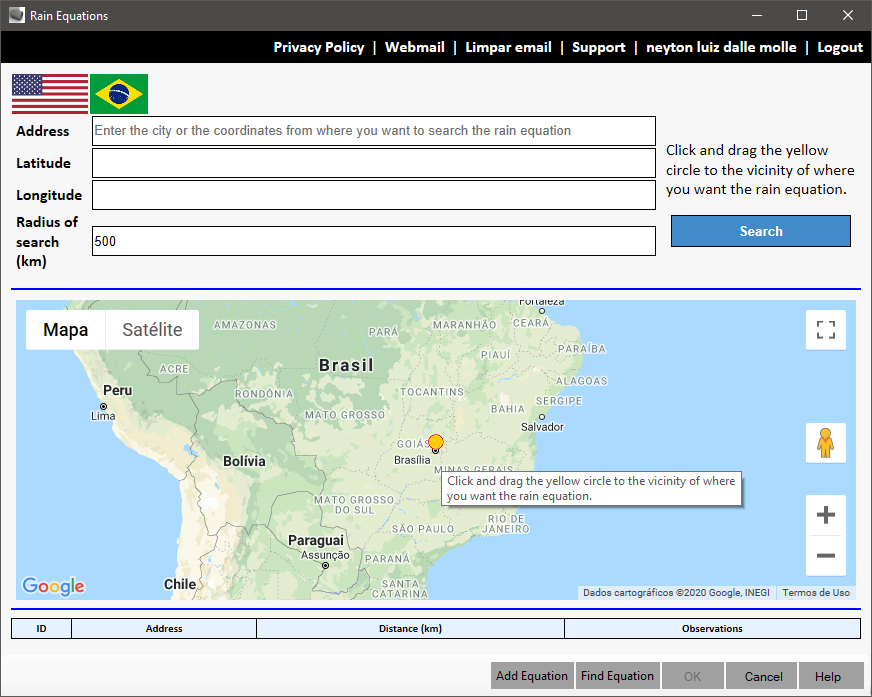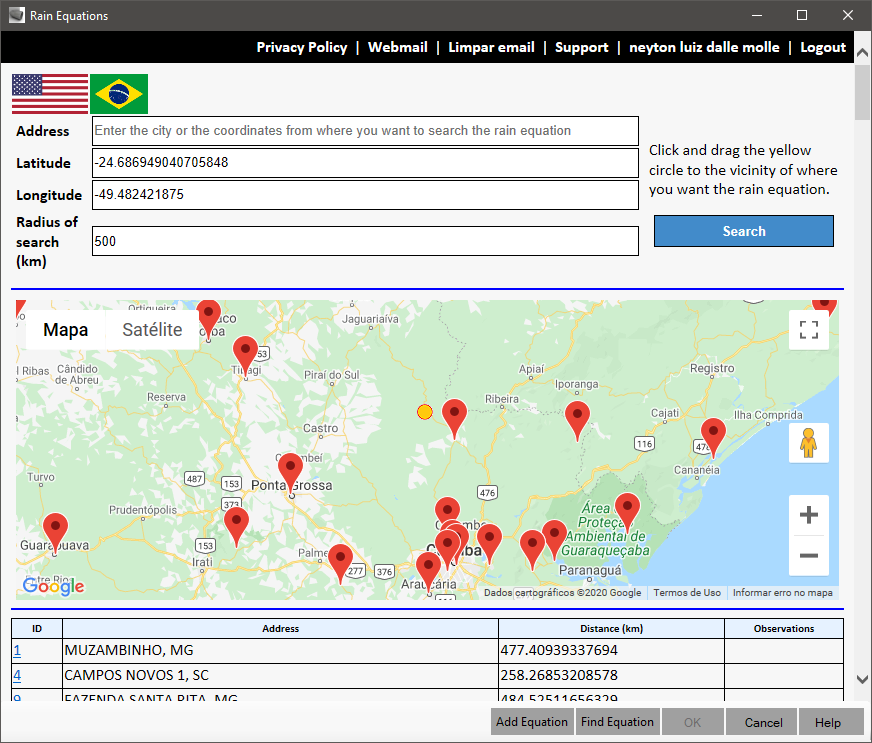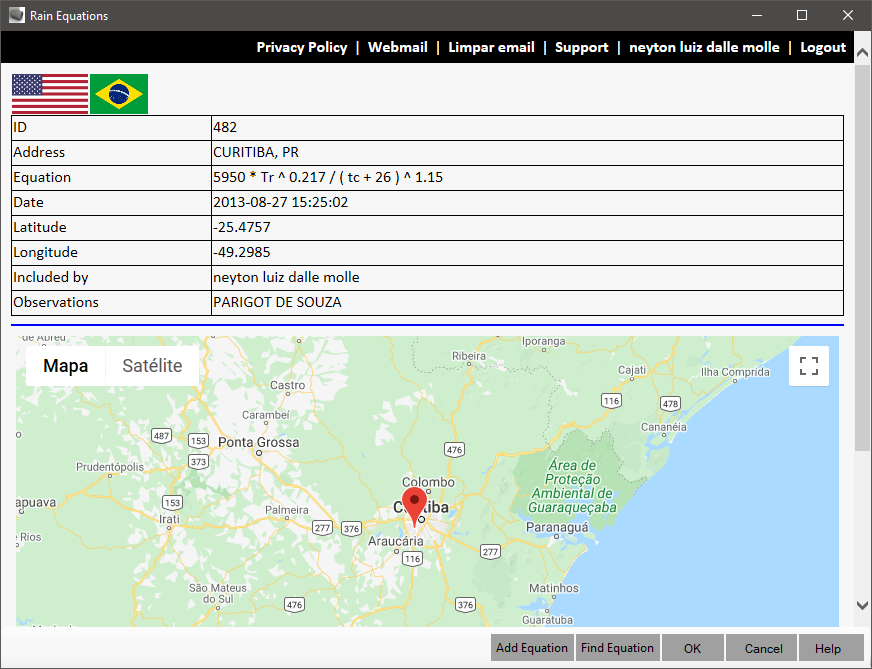Rain Equations
A rainfall equation makes it possible to calculate precipitation as a function of recurrence time and concentration time.
This rainfall equation will be configured in the field Options / drainage / Rainfall Equation.
Note that you can
enter the equation directly, and you can also search for one in the list of equations on the TBN2NET website, by clicking the button
 in the Options properties:
in the Options properties:

Click and drag the yellow ball to the region where the project is located or enter the latitude and longitude, also enter the search radius in kilometers and click the Search button.
The map will show several pins.
Zoom in on the map and click on the closest one:

You will be directed to the address that contains the equation data.
Just click the OK button:

If you want to search for another equation, on the screen above click the Search
button
If you are logged into the TBN2NET site, you can even add an equation for other users to use.
Notes on the equation:
It needs to be a function of Tr (recurrence time) in years and tc (time of concentration in minutes) and the answer must be mm/h (millimeters per hour).
If Nodes take the rainfall equation for Curitiba as an example:
I = 5950 * Tr ^ 0.217 / (tc + 26) ^ 1.15
Precipitation will be in mm/h, coefficients A, B, C and D would be A=5950, B=0.217, C=26 and D=1.15
So if you want to share an equation, be sure to write it correctly.
If your rainfall equation has a logarithm, use LOG(n) for natural logarithm (neperian) and LOG10(n) for base 10 logarithm, for example:
60 * ( 44.52 * ( tc + 30 ) ^ -0.8972 + 25.53 * ( tc + 40 ) ^ -0.9506 * ( -0.4847 - 0.9062 * Log( Log( Tr / ( Tr - 1)) ) ) )
Did you notice the use of LOG? Did you notice that it doesn't matter whether it's written TC, Tc or tC? The important thing is that the equation has TC in minutes, and TR in years and the answer of the equation must be in millimeters/hour
![]() in the Options properties:
in the Options properties:


